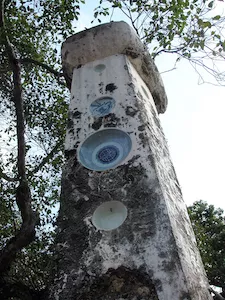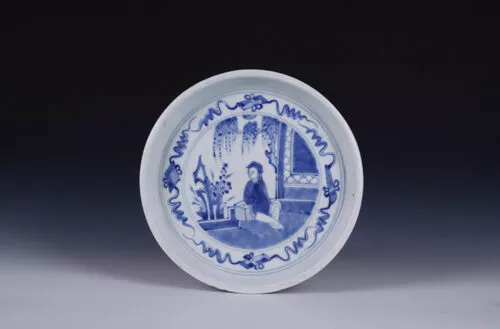
OCS Lecture – Recent Ceramic Excavations in Nagasaki: Dutch and Chinese Sites
Tuesday 11thJune: AGM, lecture and reception *
* AGM promptly at 5:30 pm followed by lecture and food and drinks reception sponsored by Christie’s
Professor Ohashi Koji, Emeritus advisor for Kyushu Ceramic Museum and chair of the Japan Society of Oriental Ceramic Studies
Recent Ceramic Excavations in Nagasaki: Dutch and Chinese Sites
At the beginning of the Edo period, the Tokugawa shogunate introduced a strict policy against Christianity. As a result, only Chinese and Dutch ships were allowed to trade with Japan in Nagasaki. In 1641, the shogunate forced the Dutch Trading Post to be relocated from Hirado to Dejima. The members of the Dutch Trading Post were under a rigorous restriction of entrance and exit to and from Dejima. On the other hand, until the end of 17thcentury, the Chinese had a permission to live among Japanese in the city of Nagasaki. In 1683, the Zheng Family Kingdom in Taiwan surrendered to the Qing dynasty. In the following year, the Qing dynasty issued a law called Zhan Hai Ling,which lifted Chinese trade ban. Consequently, Chinese cargos sailed from China to Nagasaki in a great number. This caused problems in the relationship between China and Japan. In 1689, the Tokugawa shogunate put the Chinese merchants under its control by founding Tojin yashiki, Chinese residence. Now that the interaction between the Chinese and Japanese were strictly restricted. The Dutch East India Company’s ‘Dejima’ and Chinese’s ‘Tōjin yashiki’showed distinct worlds within Japan. The excavated sherds from the two sites reflect the European and Chinese lifestyles unlike other excavation sites in Nagasaki. In the Dejima site, the most popular type was the Arita porcelain traded by the Dutch for the European market, followed by Chinese porcelain as well as Hizen porcelain for the Japanese market. In the Chinese residence site, a significant quantity of Chinese porcelain for the Chinese market was excavated with a relatively small portion of Hizen porcelain for the use of Japanese and Arita porcelain for Europe. This paper compares the two different worlds in Japan by discussing export Arita porcelain in Dejima and Chinese porcelain in the Chinese residence.
Professor Ōhashi Kōji (b.1948) is the emeritus advisor for Kyushu Ceramic Museum and the chairperson for Japan Society of Oriental Ceramic Studies. He studied Economics at Gakushuin University and History at Aoyama Gakuin University Graduate School, both in Tokyo. In 1980, he became a Curator at the Kyushu Ceramic Museum where he researched sherds excavated from kilns and archaeological sites in Japan and overseas. He has made the sherds speak of the technologies, design and history of Hizen ceramics. In 2006-2008, he served for the museum as the Director. He also lectures at Saga University.



